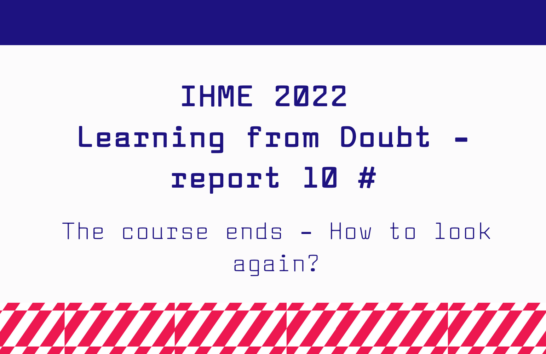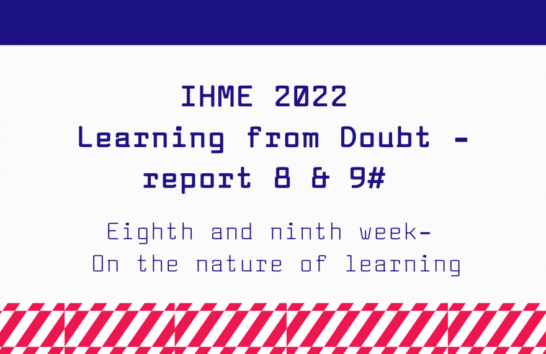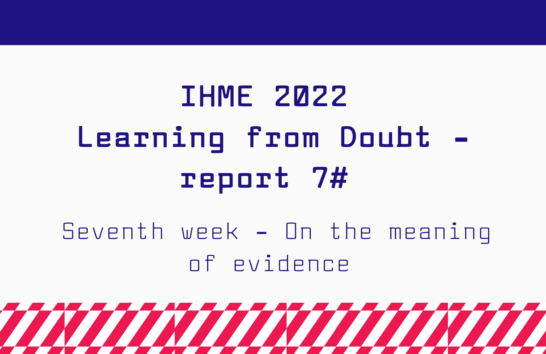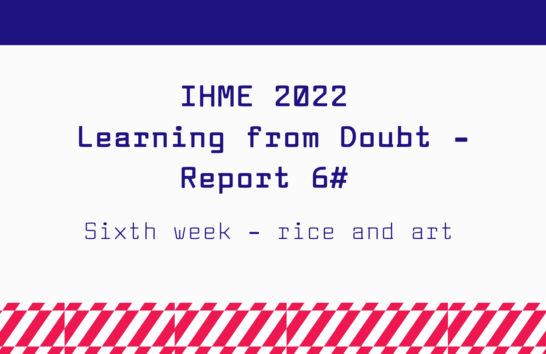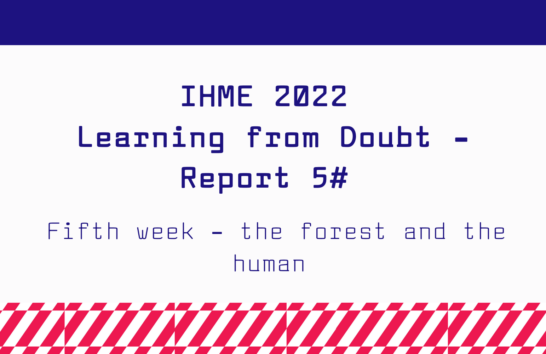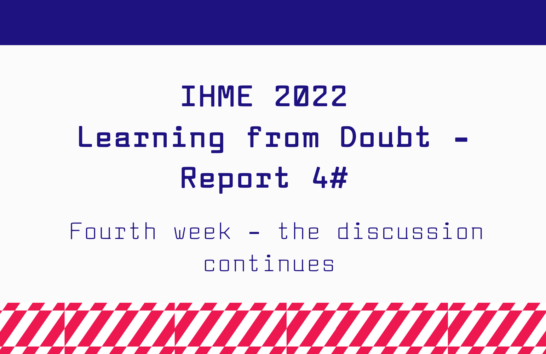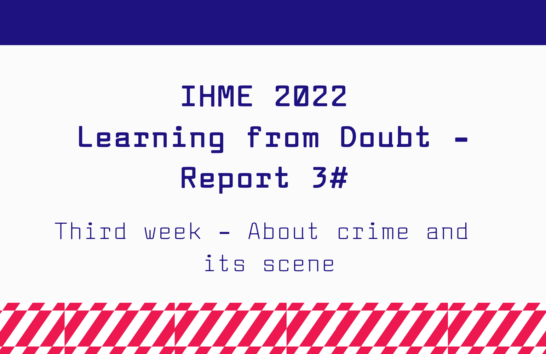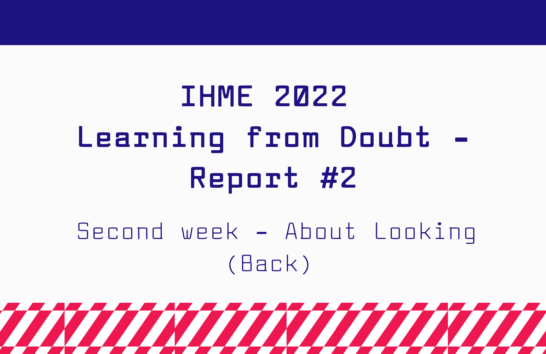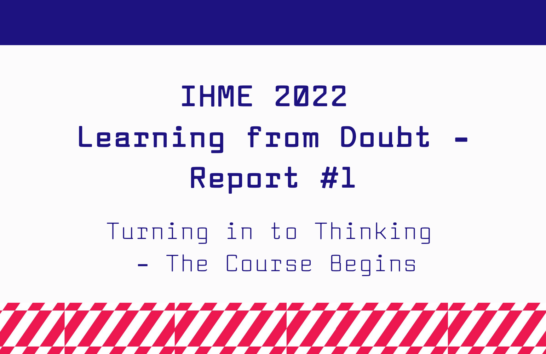Course reports
IHME 2022 Commission report 7#
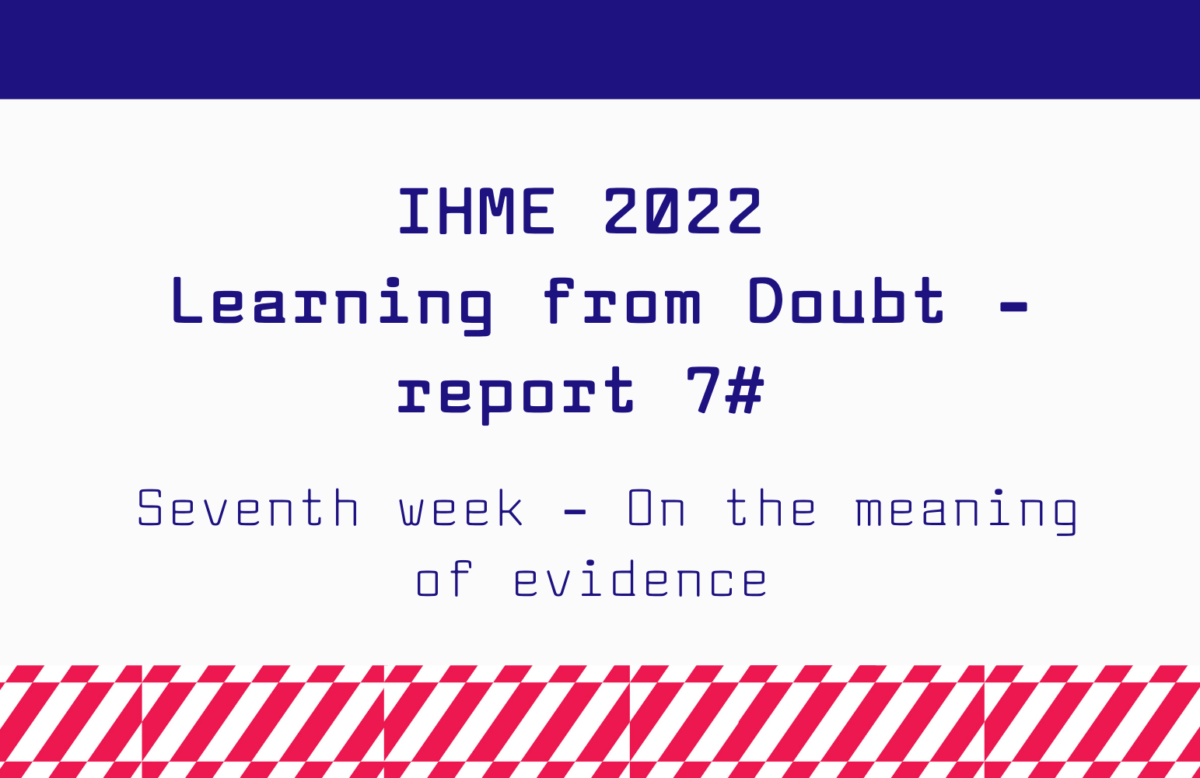
Seventh week – on the meaning of evidence
As in the previous weeks of Amar Kanwar’s Learning from Doubt course, the seventh and the eighth weeks form a distinct, two-part sub-unit. This formal dimension is a good example of the cumulative nature of the work, and of the way it presents its subjects from diverse perspectives.
Where weeks four and five dealt with The Sovereign Forest exhibition, the next two weeks will be about the concept of evidence. The evidence relates to Kanwar’s entire production: earlier documentaries reflect on the responsibility and place of the person who recorded the document or evidence. The Sovereign Forest and other later productions deal with the evidence concretely: In his works Kanwar has asked questions such as: How is evidence defined? Who defines it? Can a poem or rice seed serve as evidence in court? How is the evidence collected?
This week’s materials consist of six books and a discussion between Kanwar and activist and Editor of The Samadrusti magazine Sudhir Pattnaik. Added to that, there is an evidence wall showing material specifically related to the role of the state in ecological crimes. The material ranges from poems and posters to maps, official documentaries, and newspaper articles. Learning from Doubt is thus also developing formally and is very interesting as a presentation space.
What can we learn from evidence?
The place plays a crucial role in examining evidence: What kind of space it is, and where it is located. The Sovereign Forest has, for instance, previously been shown in Bhubaneswar, the capital of Odisha. Pattnaik says people from very different backgrounds have come to see the installation. He says one fundamental aspect has emerged: The Sovereign Forest facilitates an important learning experience: people begin to reflect on their own perceptions of crime and evidence.
Even though much of the work’s content is specifically related to the Odisha area, it is eye-opening to read other than local reactions to the work in the visitor’s book of the installation which is transcribed in this week’s readings. One visitor praises the work for its resistance nature, another writes it to be an experience for life. An important remark is also about The Sovereign Forest’s way of bringing together memories of victims of crime and thus honoring them.
From the point of view of Learning from Doubt, contemplating evidence is essential not only for understanding Kanwar’s work, but also because of the voluntary course assignment given in week four. This is based on gathering evidence so that participants can view the general issues in the course on a smaller, personally important scale. In the seventh week’s meeting, Kanwar asks: What is the language of the evidence? According to him, the crucial thing is not necessarily finding legally valid evidence but taking a step back and considering why one piece of evidence is valid and another not. This allows us to envisage broader crimes and, more importantly, their impact on people, culture and nature.
IHME Helsinki’s intern Eero Karjalainen reported on the progress of Amar Kanwar’s course on IHME Helsinki’s channel throughout the course.
